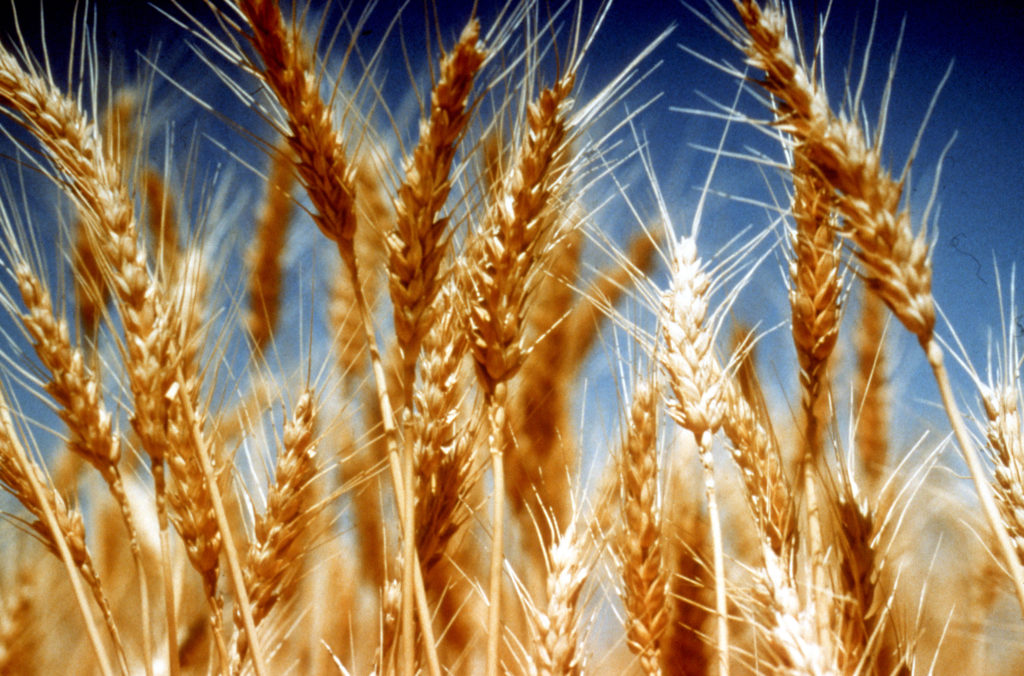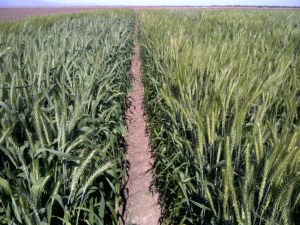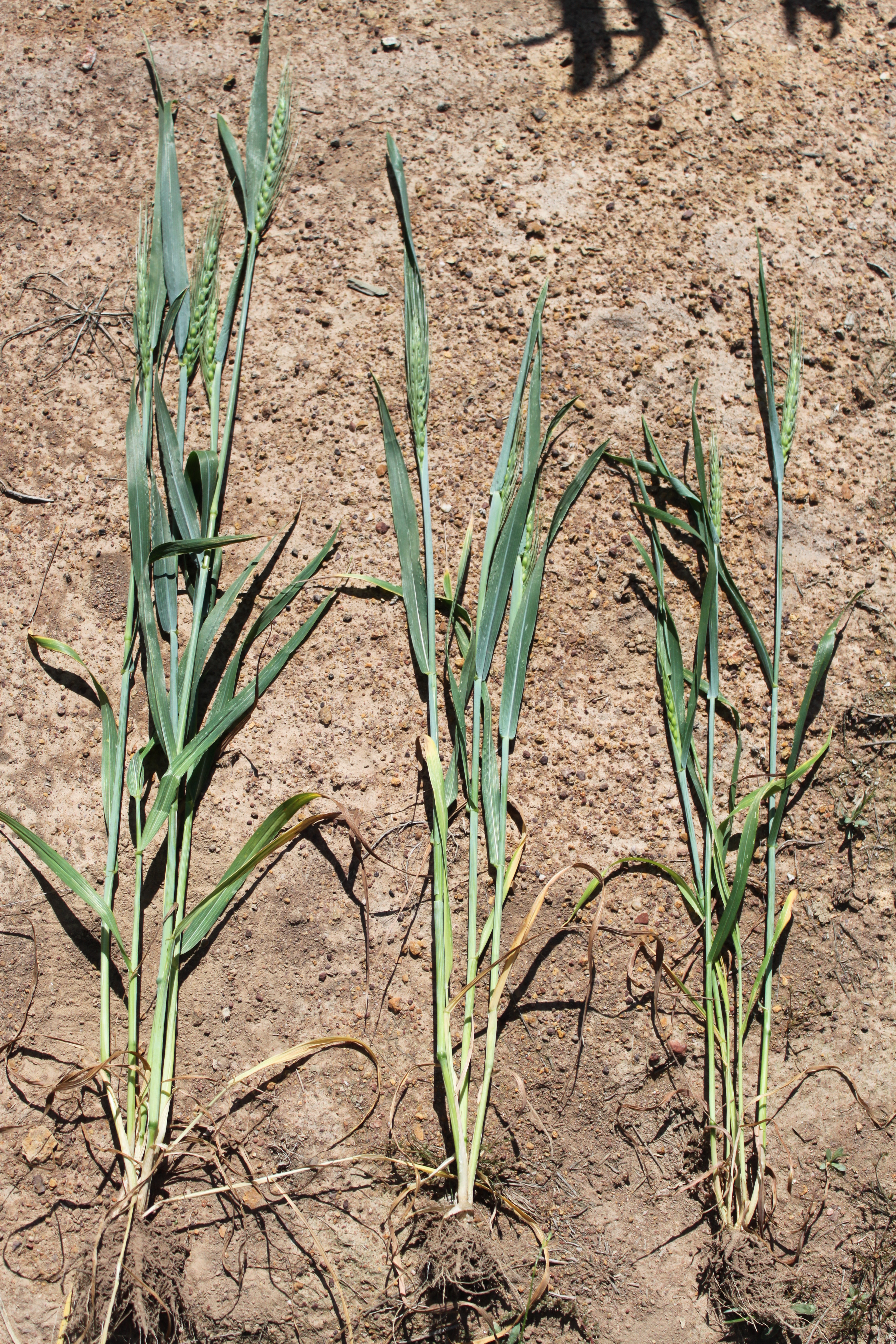
Anzac Day is a time for honouring our soldiers, eating Anzac bikkies and enjoying a couple of cold bevies while watching the Footy. For Australian wheat farmers, Anzac Day also marks the important start to the sowing season, with late April through to May having long been accepted as the optimal time for sowing wheat in Australia.
But now our research is questioning this common logic. In fact, a team of our scientists in the Agriculture team are now recommending sowing earlier; any time from early April onward.
They’ve been trialling early sowing around southern Australia, and the results were staggering. By including early sown wheat in cropping programs, yield was increased by an average 13-47 per cent across all regions.

Traditionally Anzac Day is seen as the first day of the sowing season, our researchers are recommending farmer’s get a earlier start for bigger yields
Why would sowing earlier lead to higher yields?
Rainfall is critical for the establishment of the mid to fast growing wheat varieties currently popular with Australian farmers and autumn’s historically good sowing rainfall allows the flowering of cereal crops to occur at the best possible time. This is vital to yield and, subsequently, a farmer’s profit.
But a changing climate, declining autumn rains and more extreme spring weather means that conventional sowing times are no longer ideal. Farmers waiting until Anzac Day to sow may miss the best opportunity to get the highest yield.
So we’ve been looking at ways to do things differently.
While our grain researchers were pondering the challenge of maximising farm water efficiency, (research that won them a Eureka prize in 2014) they began considering crop-sowing strategies that would use the increasing summer and early autumn rainfall to establish wheat crops earlier. After all, the idea is to get as much of the wheat crop as possible to flower during the optimal period.
And it’s not enough for farmers to just start sowing their crops earlier because the early sowing of currently popular varieties of fast-maturing wheat presents a different problem: fast maturing wheat, matures, well… fast. This makes the risk of frost damage occurring during flowering stage likely, as fast maturing wheat sown in early autumn will flower right about the time night air starts dropping below a frosty two degrees Celsius.
Winter wheats have an in-built cold requirement that stops them from developing too early – perfect for earlier sowing
Frost damage reduces grain quality and yield, so to navigate this challenge the team of researchers needed a solution. The answer is the rarely used, slow-maturing ‘winter wheat’ which can account for this issue.
Farming is an art and knowing the optimal flowering window is key to getting the best yield. So it isn’t enough for farmers to start sowing in early April, for the best results we recommend combining crops – beginning with winter wheat sowing in early April, and then staggering regularly used mid to fast maturing crops at ten day intervals.
This is great news for farmers: not only do they produce a bigger yield of wheat and improve their farm’s sustainability and profitability, but with the pressure off to sow their entire allocation around April 25, they may even find time to take part in the dawn service and watch the Anzac day clash!
You can read more about Dr Hunt’s research here: Optimising grain yield and grazing potential of crops across Australia’s high rainfall zone: a simulation analysis
This research is funded by the Grains Research and Development Corporation (GRDC)



28th April 2015 at 12:02 am
I know Lindsay and John do good work (did my PhD at the same time as Lindsay) but I know at least two researchers who would disagree with early sowing or dry sowing being always or even often a good thing. Just glancing at the paper it says high rainfall zones, yet this article mentions all zones. Could you please clarify if this is a series of papers covering all rainfall zones or if this work applies to high rainfall zones only.
I could see this applying to high rainfall zones, but not medium and low rainfall zones. I know the work done on those is far more complex and is tied to soil moisture and break of season.
28th April 2015 at 3:07 pm
Hi Tyson,
Thanks for your question. Dr Hunt has come back with the following response.
“Whilst the link to the paper at the bottom of the blog discusses the medium to high rainfall zones, the research is broadly applicable to all rainfall zones. Here is a selection of experimental results from medium and low rainfall areas are available:
http://www.regional.org.au/au/asa/2012/crop-development/8186_huntjr.htm
http://www.grdc.com.au/Research-and-Development/GRDC-Update-Papers/2015/02/Sowing-early-in-2014–how-did-it-work
http://www.grdc.com.au/Research-and-Development/GRDC-Update-Papers/2015/02/Early-sowing-in-Victoria-2014
https://www.grdc.com.au/Research-and-Development/GRDC-Update-Papers/2015/02/Early-sowing-in-2014
http://www.publish.csiro.au/paper/CP14273.htm
We also recommend these videos which we put together with the team at Grains Research and Development Corporation (GRDC):
28th April 2015 at 6:38 pm
Thanks Adam, and of course James.